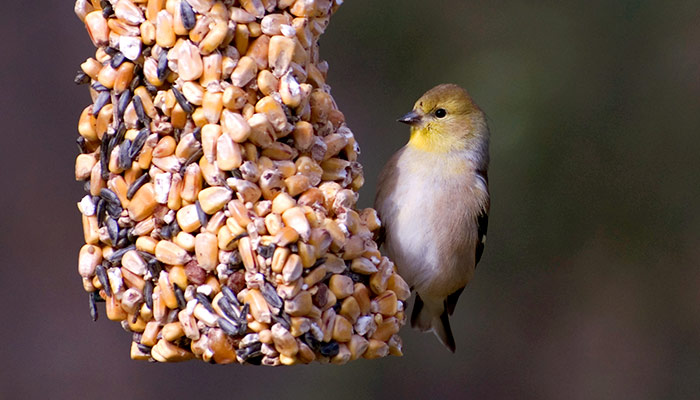While we believe that the books and resources recommended may be of value to you, keep in mind that these are suggestions only and you must do your own due diligence to determine whether the materials are appropriate and suitable for your use. PNC has no sponsorship or endorsement agreement with the authors or publishers of the materials listed.
HABITATS

Kitchen Crafts Bird Feeder
Children will learn about bird habitats and make a bird feeder.

Lesson Objective
Children will learn about what birds need in their habitat and create a bird feeder to add to the habitat of a bird.
Science
What You'll Need
- Pine cones – 1 for each child
- Vegetable shortening – 2 cups
- Birdseed – 4 cups
- Cornmeal – 3 cups
- Flour – 1 cup
- Paper plates – 1 for each child
- Large mixing bowl
- Large wooden spoon
- Measuring cup
- Plastic knives – 1 for each child
- Yarn – a 12” piece for each child
What To Do
- Have the children help you measure all of the ingredients and place them in the large mixing bowl.
- Let the children take turns mixing the wet and dry ingredients together. They can use the wooden spoon or their hands.
- Place a spoonful of the mixture onto a paper plate for each child.
- Give each child a pine cone, a plastic knife, and a plate of the mixture.
- Show the children how to use the plastic knife to spread the mixture all over the pine cone.
- Pour some additional birdseed on a clean paper plate.
- Let each child roll their pine cone in the birdseed.
- Tie a piece of yarn around each pine cone for hanging.
Resources
Home School Resources
Home educators: use these printable lesson PDFs to teach this lesson to your home schoolers. They're available in English and Spanish.
Content Provided By
Common Core State Standards Initiative – These lessons are aligned with the Common Core State Standards ("CCSS"). The CCSS provide a consistent, clear understanding of the concepts and skills children are expected to learn and guide teachers to provide their students with opportunities to gain these important skills and foundational knowledge [1]. Visit the CCSS


